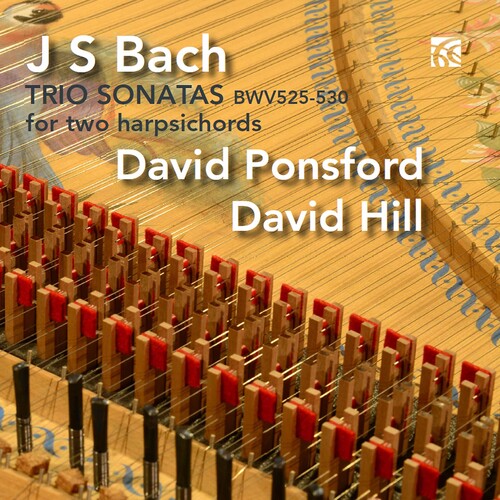Show results for
Deals
- 4K Ultra HD Sale
- Action Sale
- Alternative Rock Sale
- Anime sale
- Award Winners Sale
- Bear Family Sale
- Blu ray Sale
- Blues on Sale
- British Sale
- Classical Music Sale
- Comedy Music Sale
- Comedy Sale
- Country Sale
- Criterion Sale
- Electronic Music sale
- Fantasy Film and TV
- Folk Music Sale
- Hard Rock and Metal Sale
- Horror Sci fi Sale
- Jazz Sale
- Kids and Family Music sale
- Kids and Family Sale
- Metal Sale
- Music Video Sale
- Musicals on Sale
- Mystery Sale
- Naxos Label Sale
- Olive Films on Sale
- Page to Screen Sale
- Paramount Sale
- Pop and Power Pop
- Rap and Hip Hop Sale
- Reggae Sale
- Rock and Pop Sale
- Rock Legends
- Soul Music Sale
- TV Sale
- TV Sale
- Vinyl on Sale
- War Films and Westerns on Sale

Trio Sonatas
- Format: CD
- Release Date: 4/3/2020

Product Notes
David Ponsford writes: "My justification for arranging these works for two harpsichords derives from the preface to François Couperin's L'apothéose de Lully (1725) in which he describes the manner in which he often played trio sonatas on two harpsichords: Trios... can be played on two harpsichords... I play them with my family and pupils with very happy success, namely, by playing the first treble part and the bass on one of the harpsichords; and the second treble part and the same bass on the other harpsichord tuned to the same pitch. Now, it is highly unlikely that Couperin knew Bach's Organ Trio Sonatas, but one of Couperin's musical missions was to render equal status to Italian and French styles, and many of his trio movements are written in Italian style. Likewise, Bach's trio sonatas are thoroughly Italian in style. Hence, for me, the experiment of arranging Bach's Organ Trio Sonatas (BWV 525-530) was too tempting to resist. Furthermore, with two harpsichords whose compasses extend down to bottom FF, a fifth lower than the organ, opportunities are presented for playing the bass down an octave, at both 8-foot and 16-foot pitches, and both the harpsichordists' right hands have the potential to fill in some continuo chords when opportunities arise. The result is a transformation of these famous trio sonatas, giving them a character that is neither better nor worse than interpretations on the organ, but very different and no less exciting."


